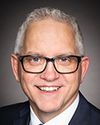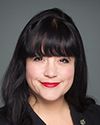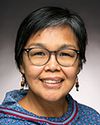I will speak to that.
In our community, for the last close to 50 years, on the northern portion we've had the Akwesasne Mohawk Police . It has only been in the last couple of years that we have let people come in and map our streets. Currently we don't have a 911 system, because some of our community members don't feel comfortable giving out their information to the outside world.
With a local community force, for years it was only people from our community. We were lucky that people were stepping up and filling those roles. However, in the last five years, we have had a lot more people from outside the territory apply because we had no other applicants who got in.
With my house, for example, when I was a dispatcher for the Mohawk police and I said go to Dwayne Thomas's house, the guy on the other end said “Okay”. I didn't have to say “318 Wade Lafrance”.
In our community, that knowledge of who we are and where everyone lives, and the families and the closeness, really helps when you get into that situation. All of a sudden, you can be in a panic mode and something's happening. There's a house on fire. There was the ice storm of 1998. It can be any of those things.
You say to go to somewhere, and the person on the other end says, “Who's that? Which district is that?” They want a physical address, because that's what they know, but our local community, as I said, was being serviced for probably the first 45 years by people who were all from Akwesasne, so they knew where to go. In that respect, it was a positive thing.
The other thing with being in a small community is that everybody knows your business, so when somebody is sick or something, our first responders are aware of that. Sarah's husband is an EMT. He has a great memory and he remembers a lot of things. He knows things that someone from the outside might not know. I think those are great things.
In my case, I went to school off the reservation. I had a lot of friends in our neighbouring town of Massena, New York, because that's where I went to high school. In the early nineties, going up to visit them, when I'd get pulled over and asked why I was in Massena, I would always say, “Is it illegal to be in Massena?” I knew what they were getting at, because I was coming from the local first nations community and I was into trouble or something. I don't know why that assumption was. However, to get pulled over on your territory and recognize a person and see a friendly face and stuff like that definitely helps in our community.





